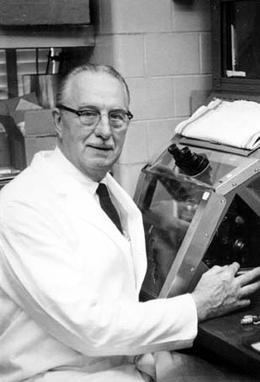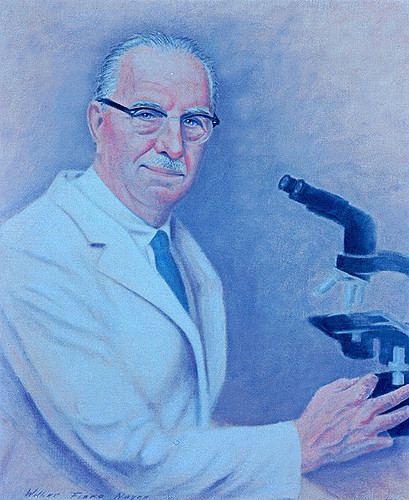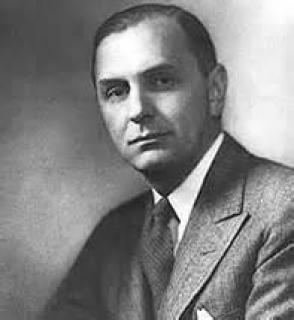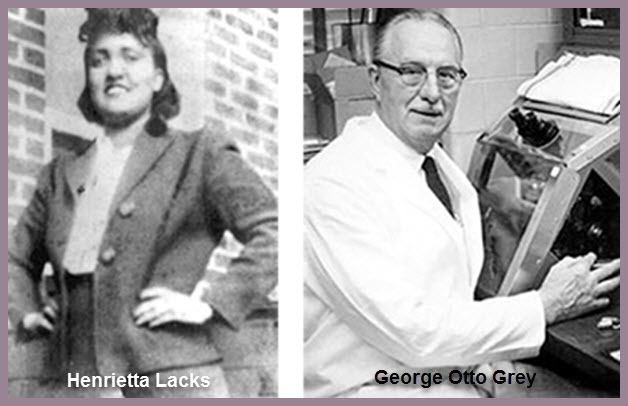Name George Gey Died November 8, 1970 | ||
 | ||
Henrietta's Cells for Bellevue College
George Otto Gey (July 6, 1899 – November 8, 1970) was the cell biologist at Johns Hopkins Hospital who is credited with propagating the HeLa cell line. He spent over 35 years developing numerous scientific breakthroughs under the Johns Hopkins Medical School and Hospital.
Contents
- Henriettas Cells for Bellevue College
- La vida inmortal de Henrietta Lacks Discurso para interpretacin ES
- Personal life
- Career
- Tissue Culture Association TCA
- Death and legacy
- References

La vida inmortal de Henrietta Lacks - Discurso para interpretación (ES)
Personal life

Gey (pronounced "Guy") was born in Pittsburgh, Pennsylvania on July 6, 1899, the son of German immigrants Frank and Emma Gey. He had an older brother Frank and younger sister Henrietta. Gey's parents immigrated from Germany, and according to the 1910 United States Census, they lived in suburban Pittsburgh.

Gey graduated Peabody High School, and received undergraduate degree in biology from the University of Pittsburgh in 1920. Around 1926 he married Margaret K. (1900–1989), and they later moved to Baltimore where he would earn his medical degree from Johns Hopkins University. After graduating Hopkins in 1933, Gey immediately began his 37 year teaching career at the Johns Hopkins Medical School.
Career

HeLa Cell Line

Gey isolated the cells taken from a cervical tumor found in a woman named Henrietta Lacks in 1951. These cells proved to be very unusual in that they could grow in culture medium that was constantly stirred using the roller drum (a technique developed by Gey), and they did not need a glass surface to grow, and therefore they had no space limit. Once Gey realized the longevity and hardiness of the HeLa cells, he began sharing them with scientists all over the world, and the use of the HeLa cell line became widespread. The cells were used in the development of the polio vaccine, lead to the first clone of a human cell, helped in the discovery that humans have 46 chromosomes, and were used to develop in vitro fertilization. By the time Gey published a short abstract claiming some credit for the development of the line (after much nagging from his wife, Margaret), the cells were already being used by scientists all over the world.

Controversies
Due to the unusual growth capabilities of the HeLa cell line, it contaminated many cell cultures and ruined years of research, as discovered by Stanley Gartler in 1966. The cells, as it turned out, could float on dust particles and could be transferred on unwashed hands or used pipettes, and therefore end up in other cell cultures. Because the cells were so pervasive, just one could lead to the complete take-over of a culture.
There was also the controversy surrounding how the cells were retrieved, as made famous by the book, The Immortal Life of Henrietta Lacks. The cells were taken from Henrietta Lacks without her knowledge or permission, and her family remained unaware until the 1970's. He was careful in keeping her actual name secret, and it was not made public until after his death.
Roller Drum Technique
Gey is also credited for creating the roller drum, which was essential for the development of the HeLa cell line. This machine was one of the first to help nurture cell cultures. The roller drum consisted of various holes where tissues and their appropriate growth substances were all located. The drum spun in order to mix the substances and once an hour allow the cultures to be exposed to the environment until the drum rolled again and rebathed the cells in liquid. Gey is also noted to be one of the first to document cell division and growth on film. He devised a time lapse camera that stood twelve feet, built out of spare parts from a nearby junkyard, with a temperature controlled incubator.
Tissue Culture Association (TCA)
During Gey's tenure at Johns Hopkins, he founded and was the first president of the Tissue Culture Association (TCA). The main object of the TCA was to introduce scientists to tissue, culture methodology, and train technical personnel. TCA is known today as the Society for In Vitro Biology, which currently embraces over 1,500 members. Through years of fundraising Gey was able to raise the millions of dollars needed to open the permanent home for the TCA, W. Alton Jones Cell Science Center at Lake Placid, New York. A few of the medical advances achieved through the TCA include the clone growth of rodent cells, the development of time lapse cinematography, and the electron microscopic examination of cell structures.
Death and legacy
Gey died from pancreatic cancer on November 8, 1970 in Baltimore, Maryland, less than a year after his initial diagnosis. When undergoing an emergency procedure for his cancer, doctors found that the cancer had spread to his lymph nodes, lungs and heart, thus making his cancer inoperable. Gey traveled to New York City to enroll himself in an experimental chemotherapy trial. He wanted doctors to try to cut out a piece of the cancer in his liver to grow a new cell line for cancer research. The doctors, however, didn't listen to him during the surgery and he was "furious" when he woke up, although he died later.
An important legacy Gey left on the scientific world was his teaching. In his lab, the belief was that "the way to kill your cell cultures was by using a sloppy technique". He trained hundreds of researchers around the world in his sterile techniques and introduced the world to cautious studies. Although, Gey was not given the chance to publish papers on his research or create patents before his untimely death, he left a legacy of understanding cancer, and began the foundation from which cancer research and cell culture has grown from.
